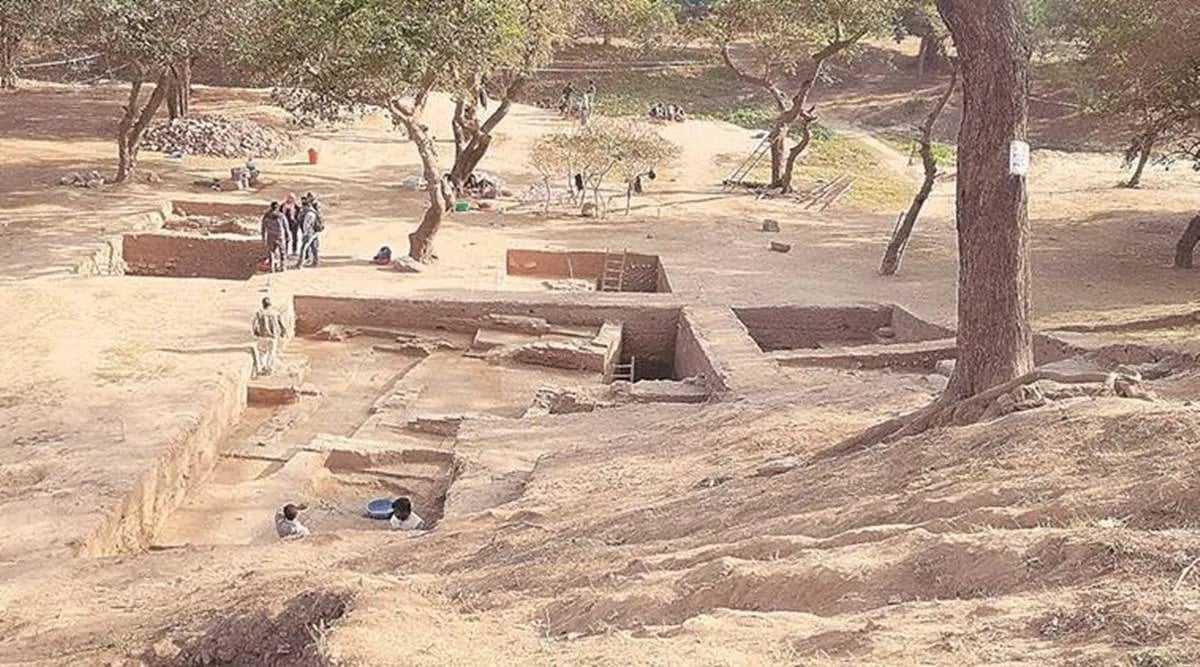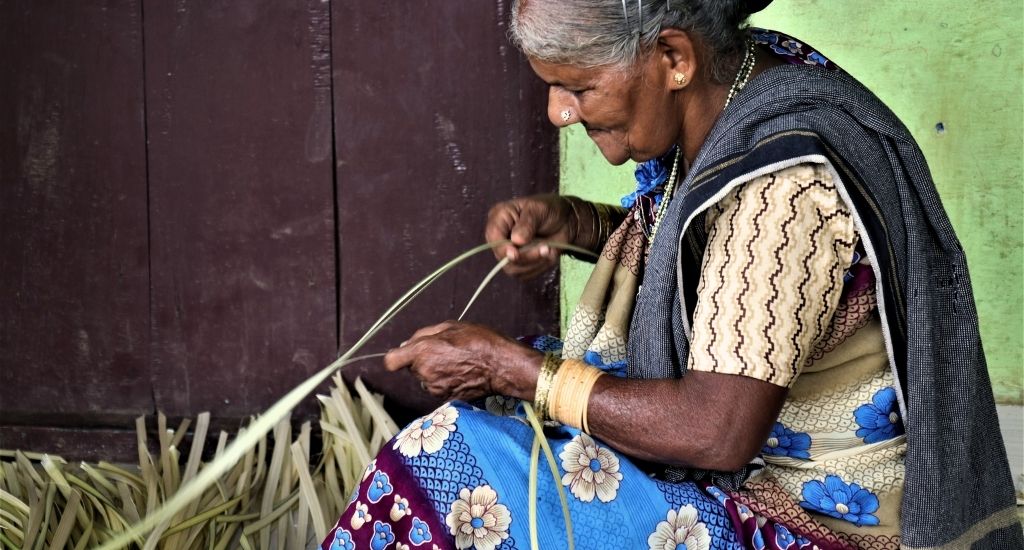
The Haryana administration provided official protected archaeological site status to two sites in Bhiwani district which belonged to the Harappan civilisation; the locations are Mitathal and Tighrana. The official decision seeks to safeguard settlements that have existed since more than 4,400 years ago. Archaeological investigations expose significant findings regarding ancient settlements by humans and their town design as well as artistic and crafted elements and trading strategies. Security personnel together with fencing structures will protect the sites from further destruction and unauthorized entry.
-
Haryana government enacted a law to turn the prehistoric Harappan sites in Bhiwani district including Mitathal and Tighrana into official archaeological sites.
-
The authorities undertook this action to safeguard settlements from the Pre-Indus Valley Civilization which existed for more than 4,400 years.
Protection and Preservation
-
An official notification based on Haryana Ancient and Historical Monuments and Archaeological Sites and Remains Act, 1964 was issued.
-
The protection strategy combines fencing with security deployment along with controlled excavation.
Historical and Archaeological Significance of Mitathal
-
Archeological probes starting in 1968 have uncovered a cultural complex from the Copper-Bronze Age period.
-
Two sets of discoveries emerged from Mitathal in 1913 with Samudra Gupta coins and from 1965 to 1968 with beads and copper tools.
-
Harappan town planning, architecture, and painted pottery with geometric and nature-inspired motifs.
Significance of Tighrana
-
Archaeological evidence demonstrates that people continued living at this spot after the end of the Harappan civilization.
-
Agricultural Chalcolithic people settled this area for the first time during 2,400 BCE.
-
The archaeological record confirms that people during this period started making stone tools and bronze tools and copper tools together with bead-production and jewelry-making.
Archaeological Insights
-
Excavation results from the sequential periods of pre-Siswal, pre-Harappan and post-Harappan phases.
-
Houses at Tighrana are built using mud-bricks with thatched roofing material.
-
Evidence of agriculture, domestication of animals, and wheel-made pottery.
Call for Preservation Efforts
-
Current research by archaeologists and historians calls for immediate protective measures to stop any destruction.
-
Before notification systems were established encroachment and agricultural activities started taking place on the land.
-
The status of a protected site will help researchers maintain conservation for long-term preservation.
About Harappan Civilization
-
During 2500 BCE the Harappan Civilization which is also called the Indus Valley Civilization functioned in the river basin areas of the Indus and Ghaggar-Hakra rivers.
-
The Indus Valley Civilization ranks among the first urban cultures of the world existing during the same period as Mesopotamia and Egypt.
-
The civilization distinguished itself through its city planning together with sophisticated drainage systems along with extensive architectural accomplishments while actively developing trade routes to Mesopotamia and Central Asia.
-
The civilization which received historical praise for its remarkable metropolis designs and extensive trading networks and superior handiwork existed across India Pakistan along with Afghanistan.
-
The settlements of Mohenjodaro and Harappa along with Banawali and Rakhigarhi helped researchers understand the lifestyle of these prepared settlements.
Geographical Spread
-
The ancient civilization stretched across present-day northeast Afghanistan through Pakistan up to northwest India.
-
Population centers existed throughout the territories of the Indus river basin alongside areas along the Ghaggar-Hakra river as well as its tributaries.
Harappan Sites in Haryana
-
Banawali:
-
Location: Situated near the dry bed of the Rangoi River in the Hissar district of Haryana.
-
Historical Significance: Exhibits all three phases of Harappan civilization—Early, Mature, and Late Harappan.
-
Urban Structure:
-
The urban plan of Banawali comprised two sections following a wall construction: the citadel and the lower town.
-
The city builders constructed wells along with bathing pavements and drainage systems using baked bricks during the Harappan period yet residential sections were created with mud bricks.
-
-
Excavations:
-
The discovery of this structure consisting of such elaborate facilities including multiple rooms, kitchen, toilet and wash basin jar indicated sophisticated urban development.
-
Archaeological evidence demonstrates that Banawali operated as an important trading hub because numerous seals and weights were discovered.
-
Research of terracotta plow models combined with multiple stone weights demonstrates both farming and trading activities occurred at this location.
-
-
-
Rakhigarhi:
-
Location
-
Rakhigarhi stands as the greatest Harappan settlement found within Indian territory in Hissar district Haryana.
-
-
Urban Structure:
-
This site featured two sections where the upper section of citadel existed beneath the lower town and included platforms and fire altars and drainage systems that operated effectively.
-
-
Excavations:
-
Archaeological investigations showed a gemstone workshop which produced uncompleted beads from carnelian, chalcedony, jasper and agate stones.
-
Evidence of bone and ivory craftsmanship, with finished and unfinished tools.
-
A dug-up wooden coffin appeared as a singular burial element in Harappan tradition.
-
-
Major Cities and Settlements
-
Harappa: Harappa represents the oldest known excavation site that exhibits governmental structures and storage facilities along with uniform building materials.
-
Mohenjodaro: Among all settlements Mohenjodaro displays the most significant features that include a large bathing establishment alongside a properly structured road network and intricate drainage system.
-
Dholavira: Unique water conservation structures and reservoirs.
Economic and Social Life
-
The farmers of this region grew wheat together with barley peas and cotton.
-
The site enjoyed a comprehensive network of trade relations with Mesopotamia as well as Central Asia and other key points throughout the Indian subcontinent.
-
Industrial sophistication reached a remarkable level in bead-making and pottery production along with metalworking.
Decline of the Civilization
-
The decline of this civilization remains a mystery to scholars who consider environmental changes alongside river droughts and potential military attacks among the explanations.
-
A gradual process of urban decline made rural communities replace the dominant role of major urban settlements.
Conclusion
The Haryana government advanced protecting Mitathal and Tighrana by making them marked archaeological sites as a vital move in safeguarding India's diverse Harappan heritage. The sites allow researchers to explore diverse information about early city development whereas they also show economic processes and technical progress of past societies. Archeological research and conservation processes will providing key insights into the civilizations that existed in the Indian subcontinent during antiquity.



 Understanding the Kancha Gachibowli Protests: What Lives in Kancha Gachibowli? A Closer Look at Hyde
Understanding the Kancha Gachibowli Protests: What Lives in Kancha Gachibowli? A Closer Look at Hyde Kannadippaya: Kerala's First Tribal Handicraft to Receive GI Tag
Kannadippaya: Kerala's First Tribal Handicraft to Receive GI Tag Sagarmala Programme: Powering India’s Maritime Revolution
Sagarmala Programme: Powering India’s Maritime Revolution Mount Lewotobi Laki-Laki Volcano Eruption in Indonesia – Details & Impact
Mount Lewotobi Laki-Laki Volcano Eruption in Indonesia – Details & Impact CM Stalin Inaugurates India’s Largest Single-Location Solar Plant
CM Stalin Inaugurates India’s Largest Single-Location Solar Plant South Coast Railway Zone Approved: Key Milestone for Andhra Pradesh
South Coast Railway Zone Approved: Key Milestone for Andhra Pradesh Decline in Haryana Sex Ratio at Birth 2024
Decline in Haryana Sex Ratio at Birth 2024 Polar Vortex Shift Triggers Severe Winter Storm in the US
Polar Vortex Shift Triggers Severe Winter Storm in the US PM Modi to Inaugurate Z-Morh Tunnel: A Game-Changer for Jammu & Kashmir
PM Modi to Inaugurate Z-Morh Tunnel: A Game-Changer for Jammu & Kashmir






